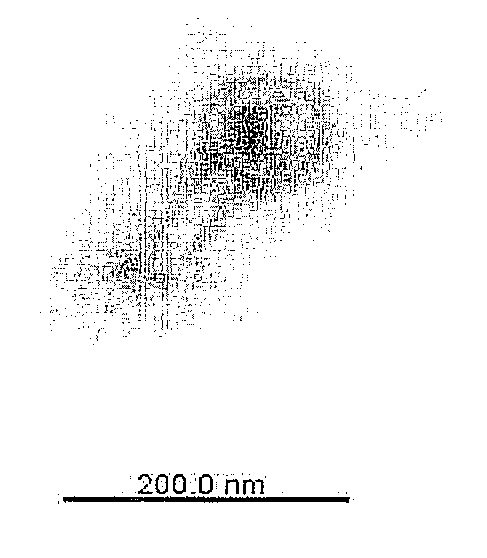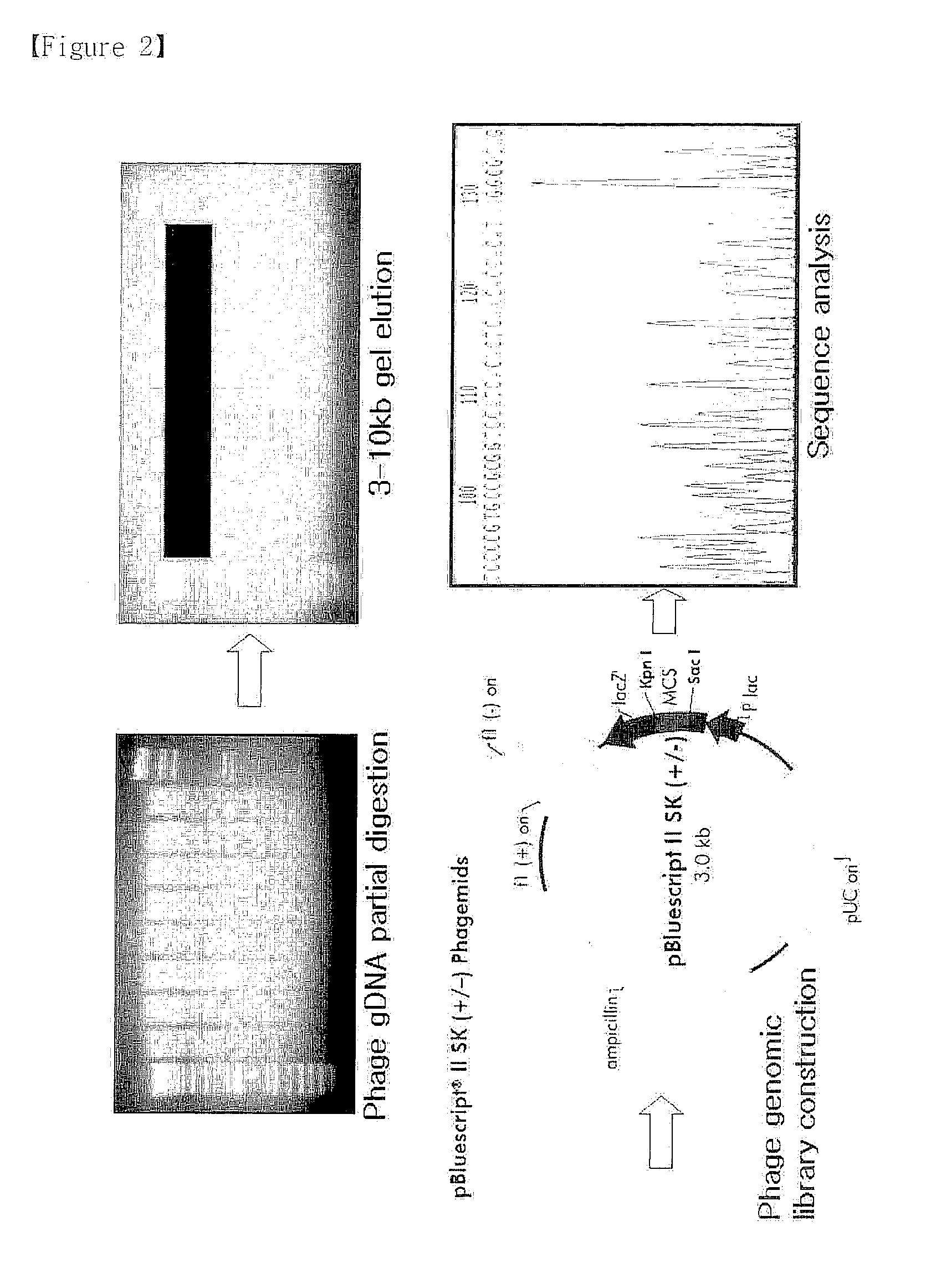Bacteriophage or lytic protein derived from the bacteriophage which effective for the treatment of staphylococcus aureus biofilm
- Summary
- Abstract
- Description
- Claims
- Application Information
AI Technical Summary
Benefits of technology
Problems solved by technology
Method used
Image
Examples
example 2
Genetic Characteristics of the Staphylococcus Aureus Specific Bacteriophages SAP-1 and SAP-2
Genetic Characteristics of Bacteriophage SAP-1
[0067]Genetic characteristics of the isolated bacteriophage SAP-1 were analyzed. First, bacteriophage genome was extracted by the conventional method, followed by genetic analysis. Particularly, 50 ml of Staphylococcus aureus suspension [OD600: 1] and 1 ml of bacteriophage suspension filtered at the concentration of 1×108 pfu / ml were inoculated to 200 ml of TSB (Tryptic Soy Broth) medium (casein digest, 17 g / l soybean digest, 3 g / l dextrose, 2.5 g / l NaCl, 5 g / l dipotassium phosphate, 2.5 g / ) in 1 l flask, followed by shaking-culture at 37° C. for 3-4 hours. Upon completion of the culture, lysis of the Staphylococcus aureus was investigated. When lysis of the Staphylococcus aureus was confirmed, the culture broth was filtered with 0.45 μm filter. Then, 20% polyethylene glycol 8000 / 2.5 M NaCl solution was added to the filtrate by ⅙ of the filtrate ...
example 3
Cloning of Lytic Protein Gene and Construction of Expression Plasmid
Construction of the Lytic Protein SAL-1 Expression Plasmid
[0078]From the gene sequencing and ORF analysis performed in Example , gene sequence of the lytic protein SAL-1 was identified. To express the target lytic protein from the lytic protein gene, a large-scale expression system of lytic protein was constructed using pBAD-TOPO vector (Invitrogen). The gene of lytic protein was subcloned into the Nco I and Not I restriction enzyme sites of vector according to the conventional method. Before the cloning, enterokinase cleavage site in pBAD-TOPO vector was eliminated and instead Not I restriction enzyme site was inserted. The constructed lytic protein expression plasmid was named pBAD-TOPO-SAL1. E. coli BL21 (DE3) (Novagen) was transformed with the lytic protein expression plasmid, resulting in the preparation of a producing strain of the lytic protein. The producing strain of the lytic protein prepared thereby was ...
example 4
Over-Expression of Lytic Protein
[0080]Lytic protein was over-expressed in E. coli transformed with the recombinant plasmid constructed in Example 3. Methods for over-expression of both SAL-1 and SAL-2 are similar. The pBAD-TOPO vector based expression system is the method inducing over-expression using L-arabinose, which is a suitable expression system of toxic protein to host bacteria (according to the manufacturer's instruction titled ‘pBAD expression system’ and protocol #25-0257 publicized in 2004).
[0081]Over-expression of lytic proteins is described in detail hereinafter. The constructed plasmids contained ampicillin resistant gene, so every culture medium was supplemented with ampicillin. To express the lytic protein SAL-2. Origami (DE3) was used as a producing strain. This producing strain itself contained tetracycline resistant gene. So, to express the lytic protein SAL-2, every culture medium was supplemented with both of ampicillin and tetracycline. LB medium (trypton, 10 ...
PUM
| Property | Measurement | Unit |
|---|---|---|
| Antimicrobial properties | aaaaa | aaaaa |
Abstract
Description
Claims
Application Information
 Login to View More
Login to View More - R&D
- Intellectual Property
- Life Sciences
- Materials
- Tech Scout
- Unparalleled Data Quality
- Higher Quality Content
- 60% Fewer Hallucinations
Browse by: Latest US Patents, China's latest patents, Technical Efficacy Thesaurus, Application Domain, Technology Topic, Popular Technical Reports.
© 2025 PatSnap. All rights reserved.Legal|Privacy policy|Modern Slavery Act Transparency Statement|Sitemap|About US| Contact US: help@patsnap.com



